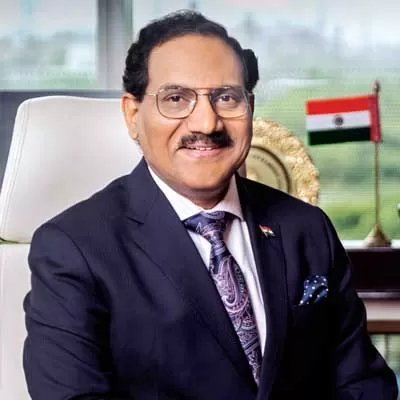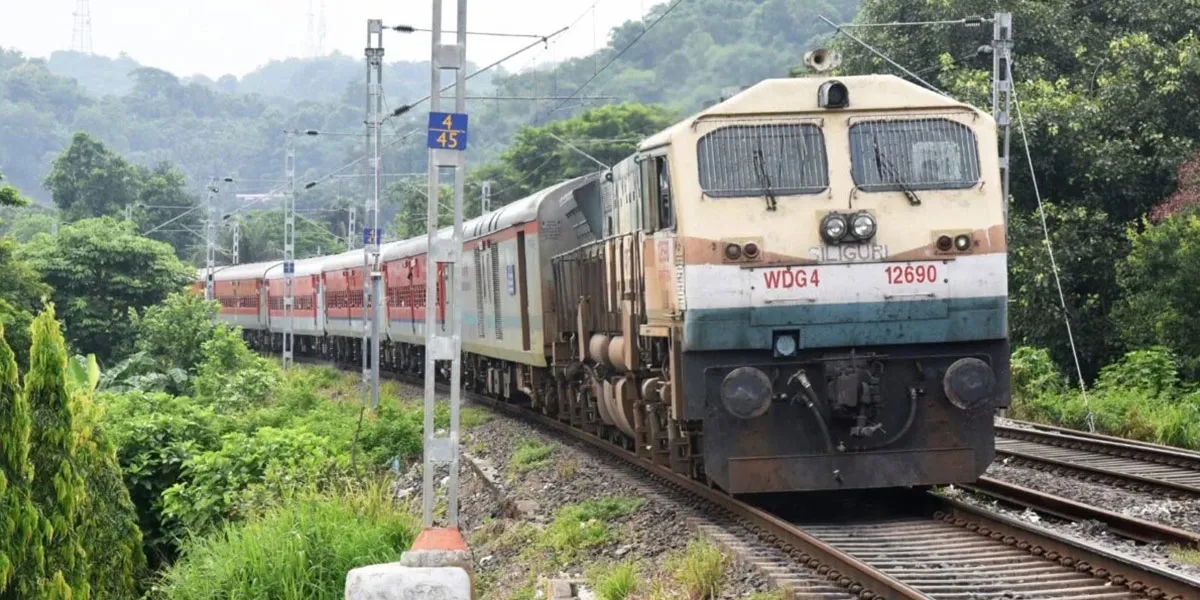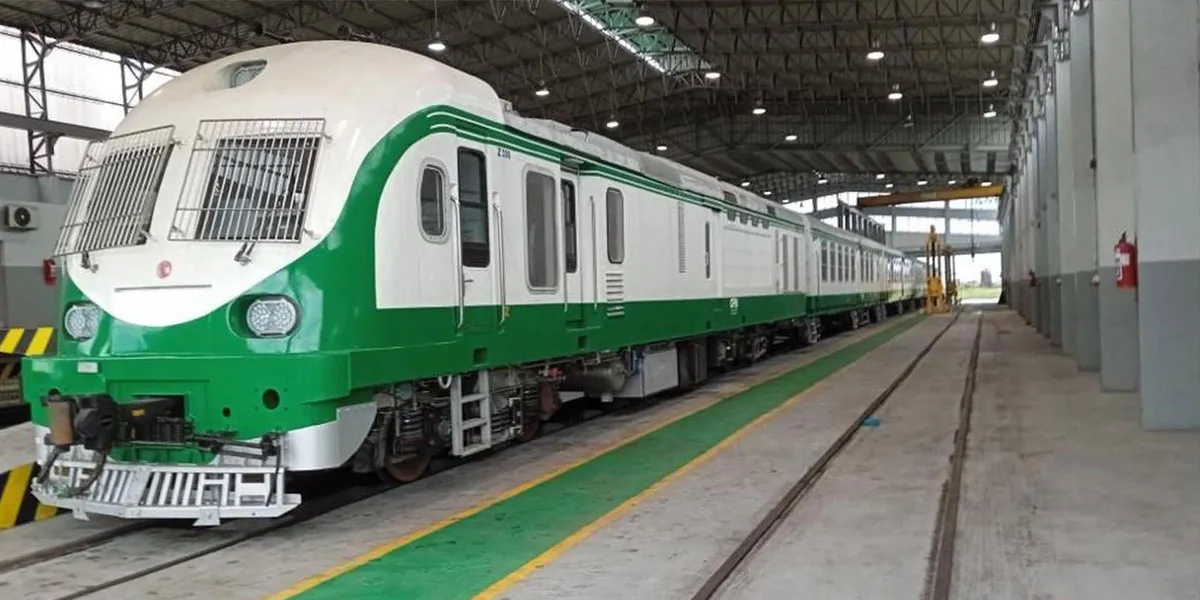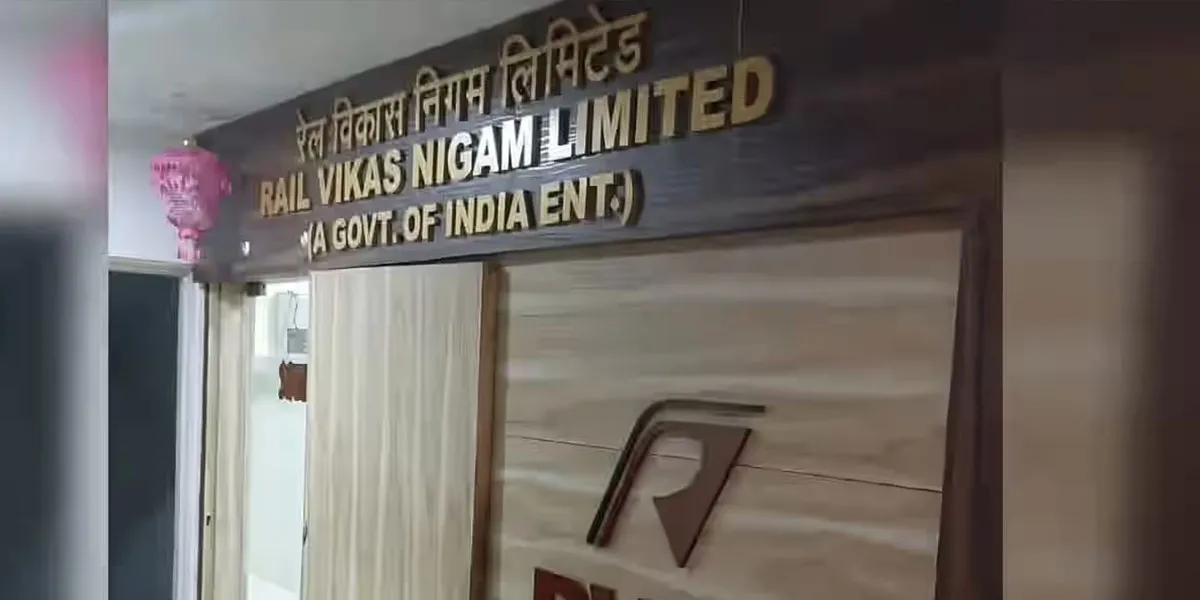With stock prices up three to four times in six months, CMD Vivek Dewangan says REC is an NBFC with 90 per cent lending going to state gencos, transcos and distribution companies and 10 per cent to the private sector. Rising share prices reflect the response of investors and stock markets to the improvement in the health of the power sector.
Who are the investors now? Where do you raise funds from?
Our total asset under management (AUM) on 1 April 2022 was Rs.3.85 trillion. Last year has seen fabulous growth. Our AUM increased by
13 per cent from Rs.3.85 trillion to Rs.4.35 trillion.
In a year Rs.50,000 crore was added to our AUM. For the current financial year, the growth is 20 per cent instead of last year’s 13 per cent. The AUM grew in H1 from Rs.4.35 trillion on
31 March 2023 to about Rs.4.74 trillion at the end of September. About Rs.400 billion has been added in six months. Last 12 months we added Rs.500 billion but in the first six months now we have added Rs.400 billion. We had made a conservative estimate that our AUM would double to about Rs.10 trillion by the year 2030. But if we are able to maintain growth of more than 15 per cent we will be able to double our AUM in the next five years, in 2028 itself instead of waiting for 2030.
There is another significant shift which is happening - in energy transition India is a major leader, one of the G20 countries which was able to meet its commitment which was made in Paris COP 21 in 2015. In Paris we had made a commitment that we would reduce the emission intensity of GDP by 30-35 per cent by 2030 as compared to 2005 level. This we have already achieved in 2021-22. Now we have taken a target that we will bring down the emission intensity of GDP by 45 per cent as compared to 2005, by 2030.
Secondly, we had committed in Paris that at least 40 per cent of our installed capacity would come from renewable energy resources by 2030. This also we achieved in 2021-22. Now our ambition is to ensure that 50 per cent of our energy will come from renewable energy by 2030. The way things are going, we will exceed 60 per cent of installed capacity from renewable energy sources by 2030.
The Prime Minister had made an announcement in Glasgow in COP 26 that India will target to reach 500 GW installed electricity capacity from non-fossil fuels. Right now we are at around 179 GW. About 321 GW capacity is yet to be installed in the next seven years. The Central Electricity Authority, the technical arm of the Ministry of Power, has made an estimate that this will require debt financing of Rs.15-20 trillion in the next seven years. REC is targeting a humble portion of about 20 per cent. Right now our renewable energy portfolio is only Rs.300 billion, which is 6 per cent of AUM. This will increase 10-fold from Rs.300 billion to Rs.3 trillion by 2030.
I am so optimistic because we had organised a green finance summit on the side-lines of the G-20 energy transitional working group meeting in Goa in July 2023. We were able to sit down with the project developers, technology providers on the green ammonia initiative, original equipment manufacturers (OEMs) of e-buses etc. We were able to sign memorandum of understandings (MoUs) worth Rs.2.86 trillion.
It was not only on paper. In the last three months after we signed the MoUs, we have already sanctioned Rs.400 billion worth of projects out of the Rs.2.86 trillion. These have already been sanctioned and approved by the REC board. Going forward, by the end of March 2024, REC will be able to sanction about Rs.1.20 trillion out of the Rs.2.86 trillion we had identified. REC will be able to approve the entire Rs.2.86 trillion by December 2025.
Renewable energy (RE) projects take a smaller time - 2-3 years. We were targeting by 2030 to reach Rs.3 trillion. But at the rate that we are going, we will touch Rs.3 trillion in RE portfolio by 2028 itself.
Another factor that is leading to tremendous growth of REC is that the GoI is allowing us to diversify into non-power infrastructure and logistics. And they have kept a ceiling that one third of our AUM can be non-power infrastructure and logistics and yearly sanction should also not exceed one third.
In FY 2023 we had sanctioned projects worth `2.68 trillion, out of which Rs.850 billion was from non-power infrastructure and logistics. This covered MMRDA’s metro project, Maharashtra State Road Development Corporation’s (MSRDC) Mumbai-Pune Expressway project, Hindustan Petroleum refinery, the Jindal steel plant in Orissa, airports, ports, IT infrastructure, data centres and super-speciality hospitals.
These are the areas into which we are diversifying now. Last year, we were a bit cautious because this was the first year, so we had taken only those projects which were supported by the state government guarantees or which were being implemented by the state utilities/PSUs or governments. Now, after gaining confidence, we have started looking into private sector projects where revenue cash flows are assured and the entity is good.
What are the risks in infrastructure financing - traditional power, renewable power, and other infrastructure?
In renewable energy, the major risk is technological advancement. Renewable energy is intermittent so we need storage solutions for round-the-clock power supply. Customised solutions are battery energy storage. Again we are going to be dependent on imports because we don’t have resources of lithium ion. Pump storage hydel solutions are the best for India but there are associated risks of resettlement and rehabilitation in hydel projects and cost is also on the higher side. The third solution is the hydrogen fuel cell where a lot of research is already taking place. The other niche area is green hydrogen, green ammonia - it is very difficult to transport and store green hydrogen. To transport and store, it would be better to convert it into green ammonia. There is a huge demand for green ammonia. But the cost of generation of green hydrogen is about $5-6 per kg as of now. Until and unless the cost comes down to $1 per kg, it will not be viable commercially in the long term. We need to develop electrolyser technology to bring the cost down for production of green hydrogen and green ammonia.
Do you fund research in these sectors
as well?
Research we don’t do because we are the financing company, but the Government has brought in a scheme called Mission on Advanced and High-Impact Research (MAHIR), under which they are supporting research and development initiatives in niche technology areas and risky areas like offshore wind.
This has good potential in Western and Southern India but the cost is too prohibitive. So if some technology is brought in to bring down the cost it can become viable.
How soon do you think that will be possible? What stage is the research in?
India is collaborating with international agencies like the Nordic countries in offshore wind. They have the expertise. ONGC has joined hands with NTPC which has expertise in renewable energy generation and ONGC has expertise in working in deep water. If both work together, they can generate offshore wind very fast. This kind of collaboration initiative has already started.
How was the power sector able to make such strides in reforms?
We were able to achieve universal access to electricity in record time, 100 per cent village electrification was achieved in 987 days against the target of 1,000 days given by the Prime Minister. Thereafter we resolved the household electrification issues. We covered about 20.86 million households in 18 months. These are two major milestones. Universal access to electricity was achieved in 2018-19. Now whatever policies are being framed by the Central or State Governments, are being done from the perspective of consumers.
Electricity is in the concurrent list of the Constitution. Both Central and State Governments have their role to play with regard to policies in the electricity sector. Policies are driven by the expectation of the consumer. We have to meet the aspirations of the people. Having resolved the issue of universal access to electricity, consumers now demand 24x7 reliable, quality and affordable power. A lot of reforms started after universal access to electricity was achieved. After the Deen Dayal Gram Jyoti Yojana and the Saubhagya scheme, now Revamped Distribution Sector Scheme (RDSS) has been launched in July 2021 with an outlay of more than Rs.3 trillion. This is a path breaking initiative. It is targeting to improve the operational and financial efficiency of the distribution companies and also to ensure 24x7 reliable power to the consumer.
How have the states responded?
Major bottlenecks of the distribution sector were affected by certain issues - they had legacy dues from the government departments of
`1.35 trillion and they had legacy subsidy dues. State governments keep announcing subsidies to certain targeted populations but they failed to pay that amount to the distribution companies in lieu of the electricity they were giving free of cost. Regulatory issues were there - the tariff petitions of state regulatory commissions were not being filed in time. They were not able to issue the tariff order in time, the tariff was not truly cost-effective, leading to high Aggregate Technical & Commercial Losses (AT&C), radiancy losses, gap in Average Cost of Supply (ACS) and Average Revenue Realised (ARR). RDSS has addressed all these issues.
Distribution companies have committed to a certain trajectory, which has been supported by the state government cabinet resolutions. State governments have committed to bring down government department dues, to clear the legacy subsidies and they have started paying the current subsidies in advance. For Q3, they have already paid the advance subsidy in Q2. The tariff petitions are being filed in time. Tariff orders are being issued in time and now Ministry of Power has impressed upon the State Regulatory Commissions that tariff should be truly cost reflective. Government department dues have come down from Rs.1.35 trillion to Rs.630 billion, subsidy dues have come down from Rs.1.30 trillion to Rs.600 billion. They have committed that this will be paid in the next 3-4 years. By 2025-26 it will all get cleared. State governments have actually started paying current subsidies in advance. All these have led to reducing AT&C losses, which have come down substantially from 22 per cent to 17 per cent in one year, a 5 per cent drop. RDSS is aiming to bring down AT&C losses to below 15 per cent. And some of the states are targeting to bring AT&C losses to single digits, below even 10 per cent.
Pre-paid smart meters are also a very important component. The take-off has been a bit slow but it will gradually pick up momentum. Pre-paid smart meters are going to play a very crucial role in improving the collection and billing efficiency of the distribution companies.
Another reform carried out by the Ministry of Power was the Late Payment Surcharge (LPS) rules. If the distribution company paid the dues of gencos and transcos in a given timeline, their LPS of 12-15 per cent is waived. They have been asked to clear their dues in a maximum of four years in 48 equated monthly instalments. Most of the discoms have opted to clear the dues even earlier. Some of them have started clearing the dues, most will clear the dues in 2-3 years. LPS rules have brought in liquidity. Discoms have borrowed from REC or PFC, who have given requisite financing to distribution companies and the distribution companies have started paying gencos and transcos. Health of gencos and transcos has also improved and distribution companies have also got payment from government departments. So the major pain of the distribution sector is being addressed. Right now the liquidity situation is improving.
The per capita power consumption of India is only a third of the world average. We do have developmental aspirations. We want to become a developed country in the next 25 years, by 2047. In this pursuit, our per capita consumption of electricity will increase. Our per capita carbon dioxide emission is also one third of the world average. Keeping in view the principle of equity and justice, if we compare our indices with those of developed countries, they are consuming power 10-12 times the world average and their per capita carbon dioxide emission is also
10-12 times the world average. India has taken a very sustainable developmental route. We are saying that in order to increase our consumption of electricity by three times to reach the
world average we will also limit our carbon dioxide emission.
This policy gives a lot of opportunity for growth of the power sector. In 2018-19 a committee was constituted under the chairmanship of the then Cabinet Secretary, who prepared a roadmap. The main problem of this coal-based thermal power plant in the private sector becoming a non-performing asset was that the Court cancelled 204 coal blocks. So their coal linkage got washed away. Then they did not have the requisite power purchase agreement in place.
The power demand is now increasing. People are willing to sign power purchase agreements. The Ministry of Coal has come up with a vibrant coal linkage policy. Now they have gone for commercial mining of coal which has also increased the availability of coal.
The problem of coal linkage and power purchase agreement is getting resolved. At the same time the demand for coal has also increased by more than 10 per cent.
So all these stressed thermal assets are getting good bidders now - there’s more demand because that’s the lowest hanging fruit. Rather than starting a greenfield project it is better to invest in a stalled project, make some investment and make it functional. For the power sector, this jump has been tremendous.
Is REC on-track with consumer initiatives such as user pay charges?
User pay charges is a complex system - the tariff structure. A lot of cross-subsidy takes place. Industry is paying higher than the domestic rate. In European countries, the cost of electricity for domestic consumers is higher than that for industries. On the one hand we are speaking of an industrial revolution. But a balance has to be there so that industries are also incentivised. If the input cost is too high then it will be difficult. Now industries are going for captive generation, renewable energy generation. They are also going green.
The Government is coming up with this type of policy to promote this initiative so that the cost of industrial electricity is brought down.
How will artificial intelligence and big data impact the power sector?
Artificial intelligence and big data as well as block chain technology will play a big role. Compare this to the telecom sector. We are going to give consumers of electricity the option of paying their electricity bill through a mobile app and there is a long-term vision that there should be multiple service providers viz. private players like Reliance and Tatas or even the state discom. Consumers should have multiple agencies which would provide electricity to them to their satisfaction. The day of multiple options is not far off when the consumer electricity number will become portable. They can choose any service provider but the consumer number will remain the same. This can be achieved in the next 10-12 years. The Government is taking multiple initiatives. The Central Electricity Authority (CEA) has prepared a road-map in this regard. Power trading is also one of the initiatives. Right now only 3-4 per cent of power is being traded. They are targeting that 25 per cent of power will be traded through the power exchanges. Now the era of long-term PPAs of 25 years is over.
They are considering a maximum of seven to 15 years, not beyond that.
How do you ensure ESG compliance in projects that you fund?
We do have a board-approved ESG policy, which we follow strictly. The ESG policy has evolved after a lot of consultation with various stakeholders. We are going to report in the annual report, the carbon emissions saving through ESG efforts. For that a detailed marking system is being evolved. A presentation was made to our board and hopefully in the annual report of the FY 2024 this will be captured.
You are expecting a 60 per cent
change from traditional to renewable power, right?
Installed capacity is going to be 60 per cent. But the capacity utilisation factor of renewable power is only 25 per cent for solar and wind. If 100 MW power is installed, you get only 25 MW. Right now, although the installed capacity is more than 40 per cent, the share in terms of energy is only 25 to 30 per cent. The more we are able to develop cost effective storage solutions, the more the share of renewables in terms of energy. Coal-based power is still providing the base load. We don’t have natural gas. Other countries have taken the natural gas route to energy transition. The cost of liquified natural gas (LNG) is too prohibitive. With imported LNG India cannot produce power at competitive rates. That’s why gas-based power is out of question here. Until we are able to develop cost effective storage solutions, the share of coal-based plants will remain for the next 20-25 years. It will gradually come down as storage solutions in renewable energy
space evolve.
- E Jayashree Kurup




















